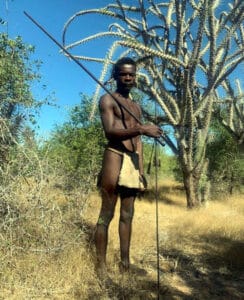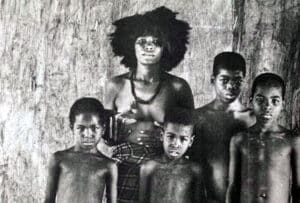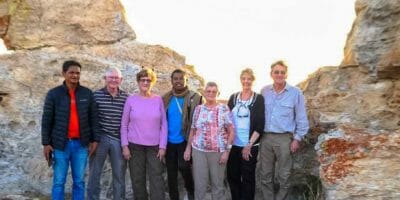
The first peoples have suffered from the last three centuries, from the hands of the sacrosanct “ evolution And the grip of industrialization. Half decimated Brazil forests, a significant suppliers of North America wood. THE ” Forest Guardians Are chased towards agglomerations, educated in Western fashion, traditions and above all very ancient languages are lost with youth increasingly attracted by the lights of cities. The Mikea people in the Malagasy southwest also seem to be doomed to this destiny. From nomadic, he became semi-nomadic, a game begins to settle. Jean Claude Vinson has known him for almost four decades. This “mikea” in the soul talks about it.
Midi Madagasikara: Are there still “original mikéas”?
Jean Claude Vinson: The last nomadic mikéa I saw is Kalania, a legend. The last “Lapihazo” living. In Mikea language that means in substance “invisible in the forest”. He was beheaded by the “dahalo” in 2018 until today his head has never been found. It was after the school attack that I built, that I named “Sekoly Anaïs Mikea” in Ankindranoke, Befandefa Municipality of Morombe, inspired by the name of my daughter. Since then, these people have gradually been sedentary.
MM. : Can you summarize how they live, or perhaps lived, on a daily basis?
JCV: Basically, these people use Sarbacanes, or “Porotsy” with the arrows, in Malagasy “Idraotse”. The “lefo” also, or the sagaie. Historical testimonies were relayed, like the king of Portugal around 1500 or earlier, which mentioned that the Malagasy chased the invaders with these weapons. In all Malagasy human groups, the sagaie and the Sarbacane have always been used. You will still find balafons on legs or kilangay, a traditional Mikea instrument also used throughout Madagascar. Mikéas sleep in cavities, sometimes with snakes. Inside, they develop the fire and a kind of fireplace. You know, their habitat is a dry primary forest, so there is no source. Today, there are sedentarized schools go to school. Some join the villages for the night and the day, they return to the forest to try to eat. We can still find at home the remains of a very old language, certainly already mixed with the “Sakalava” speaking. But there are still words that we find.

MM. : You often mention that this first people is in danger, what is the current situation?
JCV: Their situation is fragile. First, they are not “recognized” as a human group, such as the Antandroy, Merina, Betsileo. At UNESCO, they are not recognized as a Malagasy people, yet a senior official of this institution told me the importance of integrating this people into the intangible world heritage. Imagine that one of them has a copy and it is not his name that is on it. We had to find him a more city name, a name of the capital. Thus, they feel rejected.
MM. : Their forest has become a political issue because of the Base Toliara project …
JCV: Me, I have not yet been aware, until now that there is a hole, even of the dimension of that of a mouse, dug by the Base Toliara project in the Mikea forest. Go ask one of them if he knows Base Toliara, he doesn’t even know that it exists. I am neither against nor for, I want to specify. On the other hand, in this forest there is precious wood, rosewood, rosewood and among other precious essences. The narrowing of the Mikea forest began with King Andriantsly. To be able to extend his kingdom, he destroyed a lot of surface with the “Tavy”. Then, the exploitation of the wood took over.
MM. : There will be a major event concerning the Mikéas forest next week, can you tell us more?
JCV: Indeed, on May 26, the Ministry of the Environment, with representatives of UNESCO, Madagascar National Park … will formalize the proposal for the registration of the Mikea forest as a World Heritage. This should be done in the school I built. Oddly, I have not yet received an invitation or informed from them so far.

MM. : You defend beak and nails This people, even if it means shaking up certain entities, why?
JCV: There is a book that recently released on the Mikéas. Whoever wrote this book contacted me, then he came to Madagascar. I introduced it everywhere, among mikéas. Then, what shocked me the most was when they took the photo of a kid, to whom they asked to remove the “Salaka” in a class of our school. It is disrespect. So, I started to demonstrate my position in relation to this. The author put the photo in the first draft of the book, he sent me this first draft afterwards. I was completely shocked. The photo was removed. It earned me to attract the lightning of certain people, that I would hate “foreigners”, that I hate the mikéas, and this. The current speech should be, “How to preserve this first people?” ».
MM. : Personally, what is precious to you with your close relationship with the Mikéas?
JCV: What I can say of mikéas is that once you live with them, sleep in the holes, eat what they eat, experience their life. You only have one desire, to be a mikéa.
Collected by Maminirina Rado











